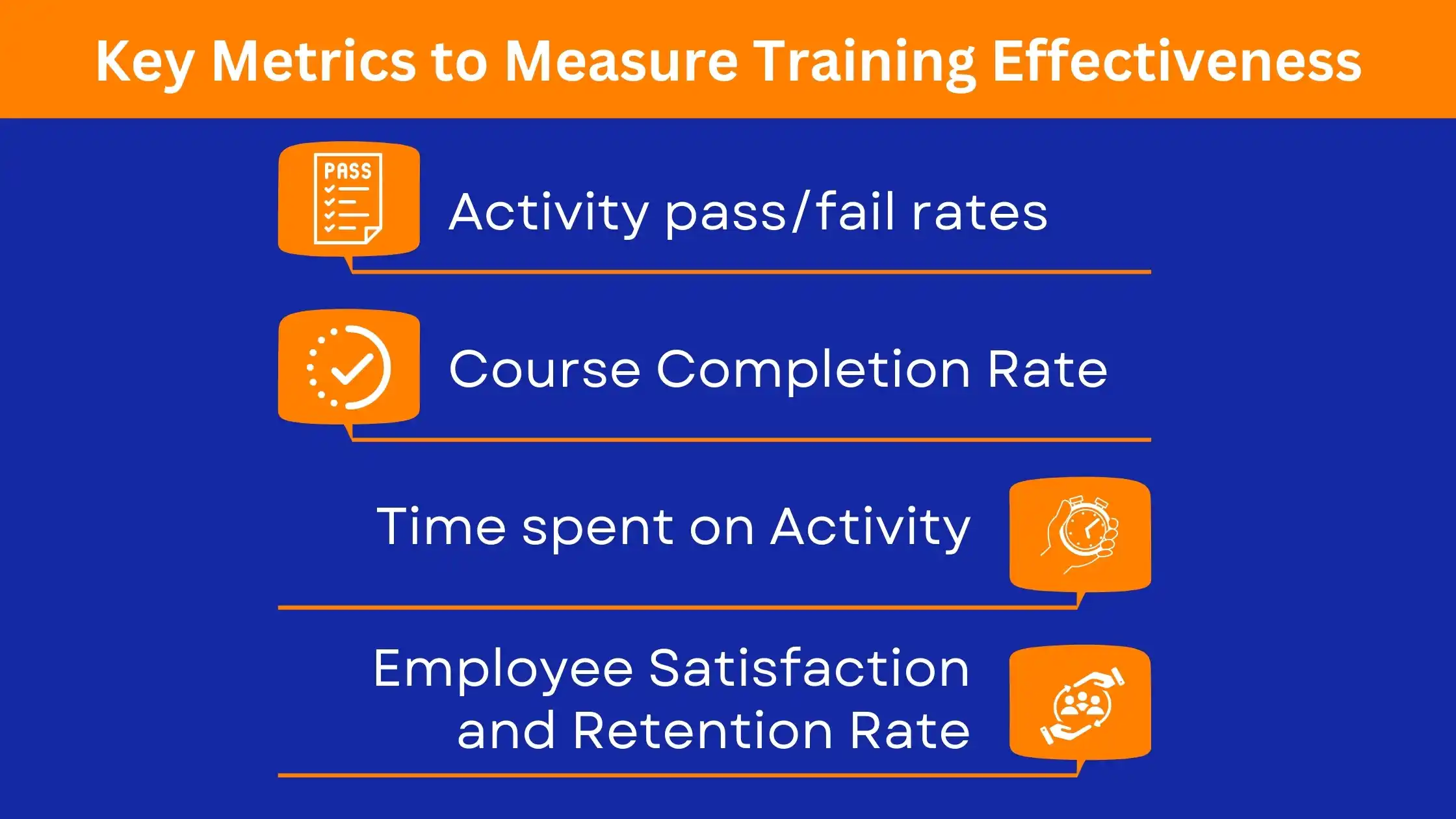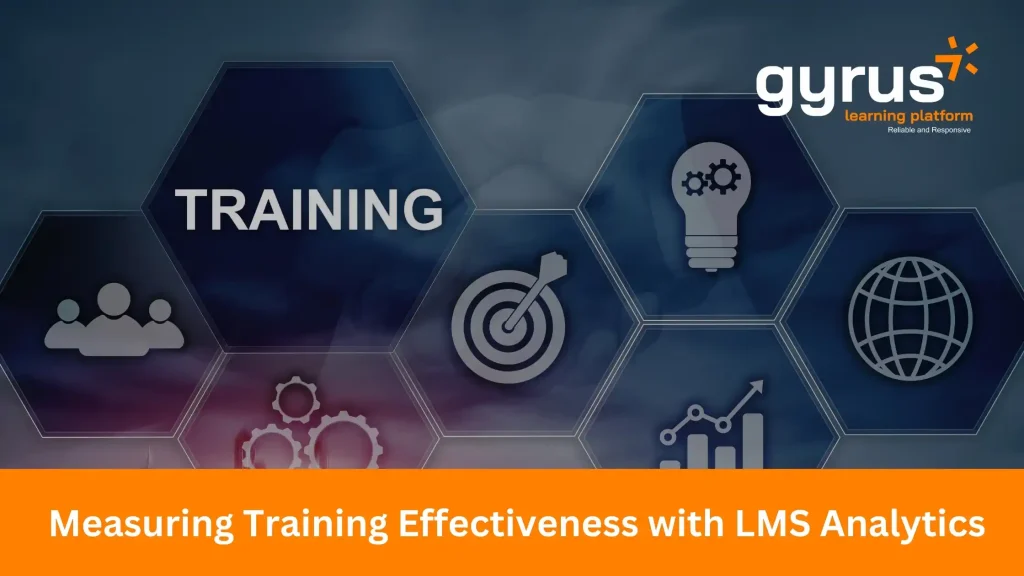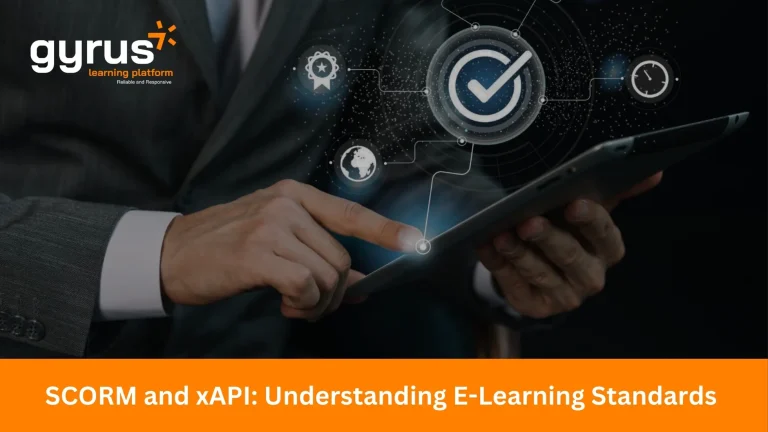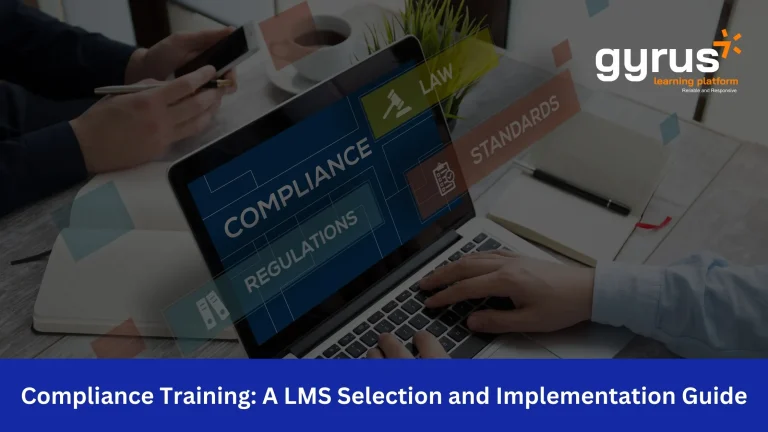Companies use Learning Analytics Tools to collect, analyze, and measure the effectiveness of their learning and development programs.
Measuring training effectiveness is important for organizations to see if their training programs are working well for their employees. It helps them know if they are using time and resources wisely. Having measurable metrics is crucial to pinpoint what is and isn’t working in training development programs. Measurable training metrics may include completion rates, engagement rates, course evaluations, and assessment scores.
Understanding Learning Analytics Tools
Purpose of Learning Analytics
Learning analytics serves to understand the broader learning environment by piecing together individual metrics, assessing them, and drawing insights from them allowing organizations to improve overall learning outcomes.
Learning analytics offers valuable insights into training investments, the quality of learning experiences, and the effectiveness of outcomes. By comparing learner progress before and after training, organizations can evaluate the impact of their programs and can more accurately measure the return on investment
Key Metrics Tracked by Learning Analytics Tools
Key metrics tracked by Learning Analytics Tools include course completion rates, enrollment rates, attendance, pass/fail rates, content views, and more.
By analyzing and understanding key learning analytics metrics, administrators can optimize their learning program and course content to better engage learners and have more effective outcomes. This can improve employee skills, knowledge, and satisfaction with their work.
Importance of Measuring Training Effectiveness
Measuring training effectiveness is crucial to fine-tune learning and development programs to make them as effective as possible. Before initiating any training, it’s essential to set the training objectives. These objectives will serve as a measure to evaluate the effectiveness of the training program based on defined learning goals.
With more effective training programs, employees will learn and retain information better, forming their skills and sharpening their performance. When employees understand their jobs better and output higher quality work, their overall satisfaction and engagement with their work will increase. Employees who feel valued and supported in their workplace will be more productive, and this is achieved through relevant and effective learning solutions.
With enhanced output and employee engagement, organizations will be more productive and reach their business goals efficiently. Businesses will continue to grow and improve with this continuation of employee performance and satisfaction.
Key Metrics to Measure Training Effectiveness

- Activity pass/fail rates: Examining pass/fail rates for activities can be helpful for understanding the difficulty of a learning activity. If the pass rates are consistently high, it may mean that learners are retaining the information well or the content is easy. If pass rates are low, it may indicate that learners are not taking in the learning content, or the content is difficult. Based on this metric, content training can be revised to increase employee retention and engagement with the training material.
- Course Completion Rate: Progress monitoring by checking if employee completion rates of online courses are high or perfect ensures that important or required training courses are completed on time. This learning analytic metric is crucial in areas like compliance training.
- Time spent on Activity: Time spent on training and time to completion are metrics that are important to understand. If learners are spending too much time, maybe you can improve the content and format. If learners finish training too quickly, the content may be too easy. You can look to add more challenging content and assessments.
- Employee Satisfaction and Retention Rate: Understanding how employees feel about the training is extremely important. Do they find it useful? Effective? Engaging? This can be measured through methods such as surveys.
Analyzing Data with Learning Analytics Tools
With GyrusAim LMS, data can be analyzed and interpreted with robust analytics features. These include advanced reporting, evaluations, and gap analysis. Utilizing these features together gives administrators the power to fine tune their learning content and process for optimal learner engagement and retention.
- Advanced Reporting: Provides detailed insights into learner progress, engagement, and overall performance, enabling trainers and administrators to make data-driven decisions.
- Evaluations: Helps collect important feedback from learners, helping assess the effectiveness of training and course design and overall learner satisfaction.
- Gap Analysis: Identifies where an employee’s skills fall short. GyrusAim LMS helps employees, supervisors, and administrators spot gaps in job roles, organizational needs, or certification training requirements. This ensures targeted training and development to close those gaps effectively.
With GyrusAim LMS’s abilities to customize reports for specific insights, administrators can interpret data for strategic decision-making.
Overcoming Challenges in Measuring Training Effectiveness
Collecting learning analytics can raise some unique challenges and concerns among organizations and their employees. In an evolving world of technology, organizations must ensure personal data is secure, accurate, and reliable. It is also important to consider and plan an effective implementation plan, so new training solutions are administered smoothly and without disruption.
- Data Privacy Considerations: Implementing data collection solutions requires careful attention to data sensitivity, complexity, interpretation, ownership, and governance. Ensuring personal information is secure is crucial for maintaining employee trust and confidentiality.
- Balance Data Privacy and Analytics: Collect only necessary data and be transparent about your data collection policies. Provide employees with clear options to consent, change, and delete their data. Regularly review and assess the impact of data practices to ensure LMS software security.
- Ensure Data Accuracy: Define clear data goals, choose appropriate data sources and methods, and regularly clean and verify data. This approach ensures the data remains up-to-date and accurate, supporting high-quality analysis and decision-making.
- Define Clear Objectives: Before collecting data, outline your objectives to focus on relevant sources such as user profiles and assessment scores. Efficiently monitor, clean, filter, and verify data to maintain consistency and accuracy before analysis.
- Plan for Effective Implementation: Designate an LMS implementation team, including a team leader, project manager, and IT specialists. Develop an implementation timeline with clear deadlines and tasks and incorporate a change management strategy to ensure a smooth transition.
Case Studies: Successful Implementation of GyrusAim LMS
GyrusAim LMS is used by organizations to efficiently train employees through data-driven insights. Here are a few success stories of customers who have seen measurable improvements with GyrusAim LMS:
- The US Air Force utilizes GyrusAim LMS’s advanced analytics to track personnel training, improve program efficiency, and enhance operational success through real-time insights.
- The Library of Congress employs GyrusAim LMS to monitor training efficiency by capturing metrics like completion rates and skill gaps, ensuring employees stay current with required knowledge and skills.
- Bethpage Federal Credit Union uses GyrusAim LMS to measure training impact and ROI, helping track development and demonstrate its value as a core organizational value.
- King Aerospace Inc. relies on GyrusAim LMS’s reporting capabilities to ensure compliance with aviation standards, track completion rates, and maintain safety and certification requirements.
- The Joint Industry Board enhances operations by leveraging GyrusAim LMS’s analytics and reporting to streamline training, ensure compliance, and improve operational standards.
Best Practices for Maximizing LMS Analytics
To maximize the potential of your LMS, there are best practices that should be followed as an administrator.
- Collect Learner Feedback: Gather course feedback and insights on training content difficulty, administration, frequency, and overall satisfaction to optimize learning and development and encourage a collaborative learning environment.
- Monitor Engagement Metrics: Track course drop-off rates, completion times, and content views. Use this data to adjust and improve programs.
- Customize Reports: Tailor reports for different stakeholders to ensure relevant data is presented for informed decisions.
- Train Staff on Data Interpretation: Provide training on using and understanding data metrics to enhance training programs and determine the next steps.
- Maintain Data Quality: Regularly review and clean data to ensure decisions are based on accurate, up-to-date analytics.
- Update Training Content: Regularly refresh content to align with industry standards and compliance.
- Analyze Trends: Identify patterns through analytics to make strategic, long-term improvements and understand organizational growth.
Conclusion
One of the most powerful advancements in technology is the capability to make data-driven decisions with analytics tools. To administer an effective and efficient learning and development program, using learning analytics tools is essential as they provide the data to make the most accurate and precise decisions. Adapting an LMS platform is the best way to use analytics to make data-driven decisions for learning strategies.









